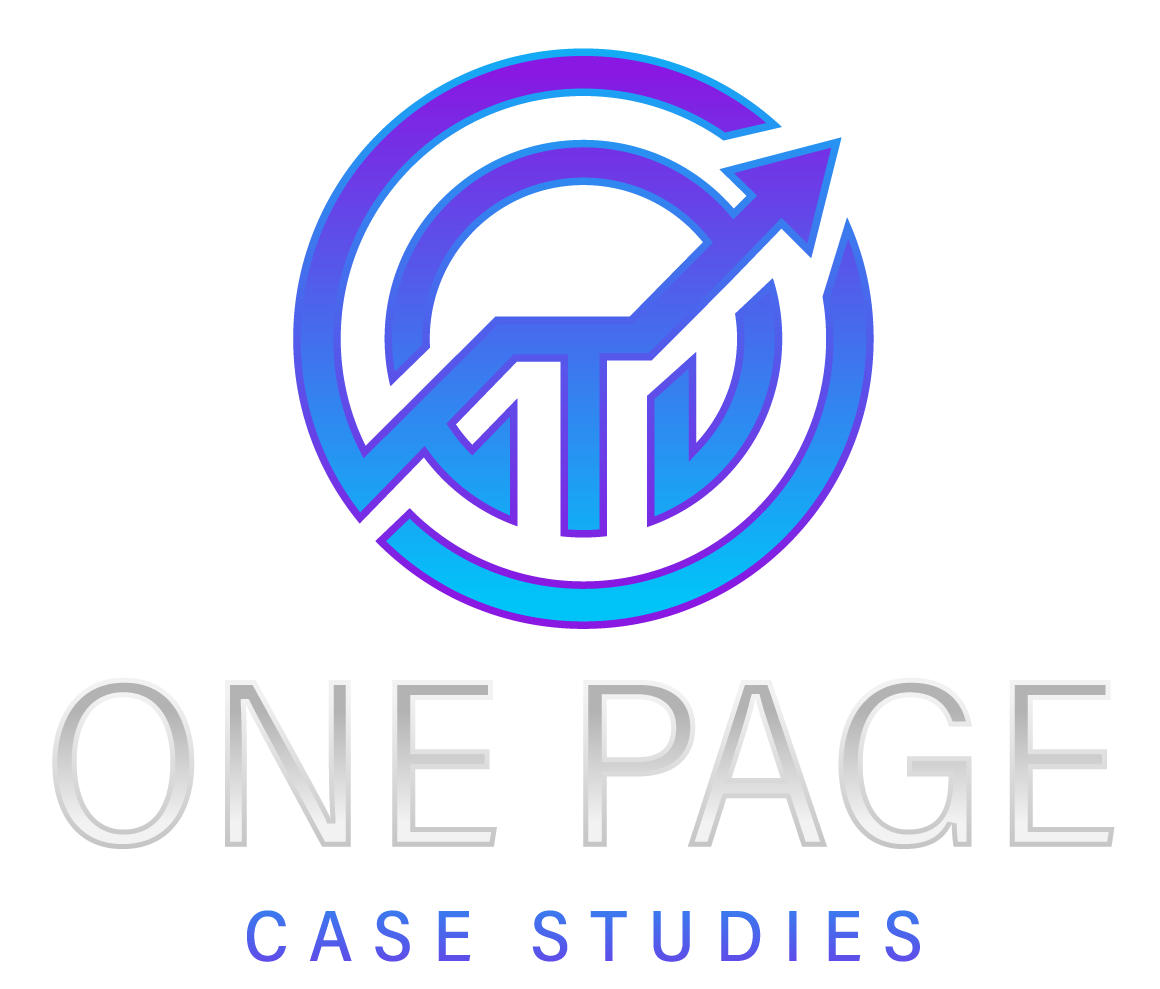Imagine being in a noisy market, with everyone shouting to sell their goods. It’s loud, it’s chaotic, but there’s that one voice that manages to catch your ear. That’s what good advertising does – it stands out.
Now, you might wonder what makes these ads so special? Eugene Schwartz, in his influential book “Breakthrough Advertising,” has the answer, and it’s surprisingly simple yet potent: belief.
Schwartz argues that the best ads aren’t about showing off a product; they’re about selling a story that resonates with you on a personal level. If an ad can make you believe that its product fits right into your life and dreams, you’re much more likely to buy. It’s not just about convincing you that a product works; it’s about making you believe that this product was made for you.
“Breakthrough Advertising” is like a map to this hidden treasure of persuasion. It brings together psychology, market savvy, and clever storytelling to show how good advertising can do more than just talk – it can spark conviction.
As we embark on this journey to unearth the secrets of influential advertising, there are a few key insights from Schwartz’s “Breakthrough Advertising” to keep in mind.
These pivotal elements blend to create advertisements that do more than just sell – they inspire belief and incite action. Let’s take a closer look:
- Engagement Factor: Amidst the plethora of advertising messages, only those that truly engage consumers, usually by resonating with their values and desires, lead to a purchase.
- Belief as a Bedrock: Eugene Schwartz posits that the foundation of effective advertising lies in creating a belief in consumers about the value and authenticity of the product or service.
- Crafting a Narrative: More than just convincing consumers that a product works, it’s essential to craft a narrative that aligns the product with the consumer’s desires, values, and identity, making them see it as an extension of their aspirations.
- Psychological Tapestry: “Breakthrough Advertising” is replete with insights into combining psychology, market understanding, and linguistic prowess to create advertisements that don’t just communicate but also serve as catalysts for conviction.
Breakthrough Advertising Review & Case Study
Influence #1 – CBRE and Breakthrough Advertising Principles

My journey began when I undertook the sales training program at CBRE (Coldwell Banker Commercial Real Estate), which stands as the world’s largest commercial real estate company.
Within the first 15 minutes of the training, Chuck Wisher, my new boss, enlightened me with this influential message: “We are the largest and most successful real estate company in the world for one reason – we have a system. If you follow the system, you will succeed; if you deviate, if you think you are smarter, have a better way or cut corners, you will fail.”
This piece of advice strongly resonated with the wisdom in “Breakthrough Advertising.”
Eugene Schwartz emphasizes the importance of understanding the consumer and creating belief, much like how CBRE emphasized adhering to a proven system.
The parallel lies in the systematic approach – where CBRE has a structured process for success, “Breakthrough Advertising” offers a framework to effectively communicate and resonate with the audience.
As I delved into One Page Case Studies, the intersection of CBRE’s emphasis on systematic methods and Schwartz’s principles in creating belief through targeted communication became apparent.
In “Breakthrough Advertising,” crafting a narrative that aligns with consumers’ desires and values is essential; similarly, the One Page Case Study is about concisely highlighting a business’s achievements and value proposition in a manner that instills belief and confidence in prospective clients.
Summary of Key Points
- Systematic Success: Both CBRE and “Breakthrough Advertising” stress the importance of following a system or framework; CBRE’s sales training emphasizes adherence to its established system, while Schwartz provides a framework for effectively engaging with consumers.
- Understanding and Belief: At the core, both CBRE and “Breakthrough Advertising” prioritize understanding the audience or consumer and creating belief; CBRE through its structured approach to real estate, and Schwartz through aligning products with consumers’ desires and values.
- Converging Principles: One Page Case Studies emerged as a confluence of CBRE’s systematic approach and the principles of “Breakthrough Advertising,” focusing on succinctly highlighting business achievements and value propositions to build belief and trust among potential clients.
Influence #2: The Bob Knakal System – A Testimony to Evolved Excellence
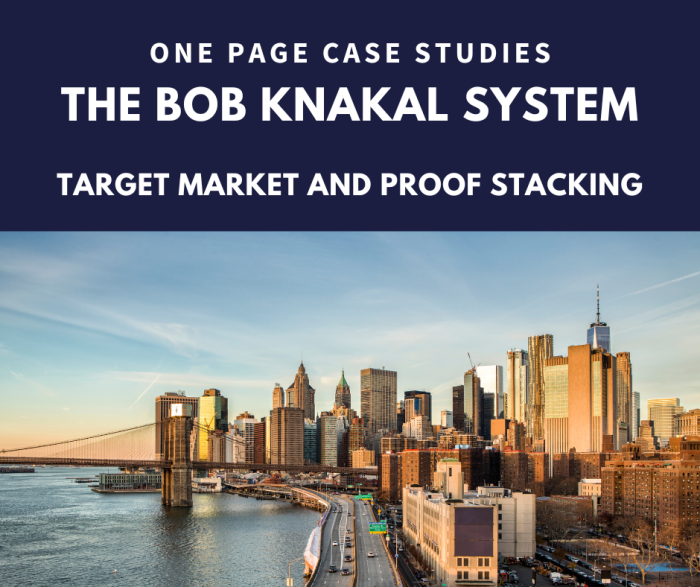
After my enlightening experience with CBRE, my journey took an exciting turn when I joined Massey Knakal Realty Services, a startup real estate boutique co-founded by Bob Knakal and Paul Massey.
The seedlings of Knakal’s meteoric success grew during his time at CBRE, which is renowned as the world’s largest commercial real estate company.
Fast forward to today, Bob Knakal has etched his name in history as the most successful real estate broker in New York City. His staggering portfolio includes the sale of over 2,200 properties in NYC, cumulating in a jaw-dropping value exceeding $20 billion. Considering that Knakal’s roots trace back to CBRE, it comes as no surprise that the underpinning of his triumphs is rooted in adhering to a proven system.
Having had the honor of working closely with Bob Knakal for a decade, I had the first-hand experience of witnessing “The System” in action. However, one cannot help but ponder – what was the magic behind “The System” that made it so remarkably effective?
Upon reflection, the essence of “The System” mirrored the fundamental principles I had encountered in “Breakthrough Advertising” and during my time at CBRE.
The underpinning of its success lay in the Universal Success Formula – targeting the market with surgical precision, knowing your potential clients intimately, and relentlessly promoting proof in the form of success stories and market insights.
This trifecta is what Bob Knakal mastered and evolved from the CBRE system. Through meticulous targeting, deep client knowledge, and a solid proof-based approach, “The System” unfailingly cultivated trust and believability among clients.
The Bob Knakal System Summarized in Bullet Points:
- Evolution of Excellence: Bob Knakal, initially influenced by CBRE’s principles, evolved them into “The System” which led him to become the most successful real estate broker in NYC.
- Success Trifecta: “The System” flourished due to its focus on the Universal Success Formula, which included targeted marketing, intimate knowledge of potential clients, and a proof-based approach.
- Trust Building: By blending these elements, Knakal expertly built trust and believability with his clients, demonstrating the efficacy of integrating core principles from CBRE and “Breakthrough Advertising.”
The Evolution of an SEO System and the Birth of the One Page Case Study Model
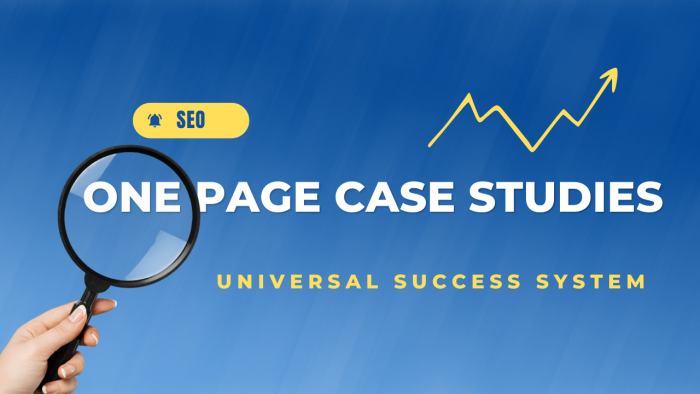
As the principles behind “The CBRE System” and “The Bob Knakal System” proved their mettle in the real estate domain, an epiphany struck that these methodologies could transcend real estate and appeal more universally.
This marked the genesis of an evolved SEO (Search Engine Optimization) system that harnessed the power of targeted communication and market understanding, ingrained in both CBRE and Bob Knakal’s systems, to elevate countless businesses nationwide across diverse industries.
Summary of Key Points
- Transformation: The proven principles of “The CBRE System” and “The Bob Knakal System” evolved into an SEO system, recognizing their potential beyond real estate.
- Integration: This new Google SEO system integrated targeted communication and market understanding, fundamental elements of both CBRE and Bob Knakal’s systems.
- Diversification: The evolved SEO system elevates businesses across various industries nationwide, paving the way for the birth of the One Page Case Study Model.
One Page Case Study Model by Ed Winslow and Caroline Vega
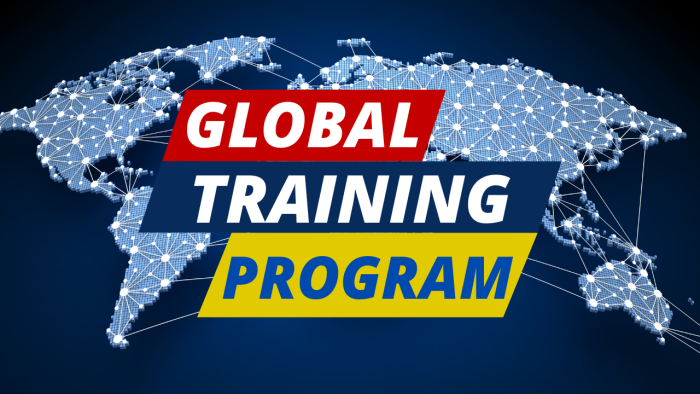
The transformation didn’t stop there. Ed Winslow and Caroline Vega, innovators in marketing strategies, recognized the power of the underlying principles and envisioned integrating them into a streamlined model.
Thus, the One Page Case Study Model was born. It was a distillation of the wisdom of “Breakthrough Advertising,” the methodical approach of “The CBRE System,” and the storytelling prowess of “The Bob Knakal System,” repurposed for a broader market.
The One Page Case Study Model centers around succinctly presenting a business’s success stories and value propositions on a single page.
It employs targeted communication, market understanding, and storytelling to engage potential clients and customers. By focusing on building belief and trust, it demonstrates how the business can resolve specific pain points or fulfill desires, much how effective advertising resonates with consumers.
- Synthesis: Ed Winslow and Caroline Vega crafted the One Page Case Study Model, melding the insights from “Breakthrough Advertising,” “The CBRE System,” and “The Bob Knakal System.”
- Focus: The Model emphasizes a succinct presentation of a business’s achievements and value proposition on a single page.
- Engagement: It utilizes targeted communication, market knowledge, and storytelling to build belief and trust with potential clients, addressing their needs and aspirations.
A Global Training Program
“Caroline and I did not stop at just creating the model; we realized that this treasure trove of knowledge and strategy needed sharing. We developed a training program aimed at educating marketers and businesses worldwide.”
This training program serves as a conduit for sharing the expertise and strategies encapsulated in the One Page Case Study Model. It empowers participants with the tools to create compelling case studies that captivate audiences and convert them into clients or customers.
Through this program, marketers and businesses learn a simple system to weave stories that resonate, communicate value, and build belief – the cornerstone of any successful enterprise.
The One Page Case Study Model and its associated training program are the culmination of years of evolution and synthesis of some of the most effective business and advertising principles. From the foundations laid by “Breakthrough Advertising” to the systems championed by CBRE and Bob Knakal, it signifies a legacy of knowledge adapted for the modern, dynamic business landscape. Through our innovation, this model now serves as a beacon for businesses and marketers aspiring to reach new heights.
- Expansion: Caroline and Ed developed a global training program, extending the reach of the One Page Case Study Model to marketers and businesses worldwide.
- Empowerment: The program equips participants with tools and strategies for crafting impactful case studies that captivate audiences and drive conversions.
- Legacy: The One Page Case Study Model and training program represents an amalgamation of timeless business and advertising principles, adapted for today’s evolving market.
The Revelation through Breakthrough Advertising
Photo Credit Brian Kurtz, Get The Book at https://www.briankurtz.net/products/

According to Ed Winslow, “The System” worked like a charm, but the exact reasoning behind its success remained shrouded in mystery. It was simply accepted that “it worked.” That was until I delved into Breakthrough Advertising.
Diving into Breakthrough Advertising was no leisurely swim. The book was dense, brimming with insights that felt akin to assembling a 3-dimensional jigsaw puzzle.
My first attempt at casually reading its chapters felt overwhelming, and I realized this required a more structured approach. So, armed with a notepad, I embarked on a three-month-long journey, dissecting the book piece by piece.
One revelation that struck me was Eugene Schwartz’s approach to projects. He started by probing with a plethora of questions, jotting down key points like collecting puzzle pieces.
After each client interaction, he’d return to his sanctuary, spreading these pieces out, and meticulously piecing them together to craft his marketing masterpieces. Schwartz was not just a marketing genius; he was an artist in the marketing realm, which might explain his amassed art collection”.
Summary of Key Points
- Insightful Dive: Delving into “Breakthrough Advertising” was an intense and enlightening experience, requiring a structured approach to fully grasp its dense, invaluable insights.
- Schwartz’s Method: Eugene Schwartz approached projects inquisitively, collecting information like puzzle pieces, and meticulously assembling them into marketing masterpieces.
- Artistic Mastery: Schwartz’s creative and methodical approach displayed him as an artist in the marketing world, adept at crafting campaigns that resonate deeply with audiences.
Creating My Masterpiece Inspired by Gene Schwartz
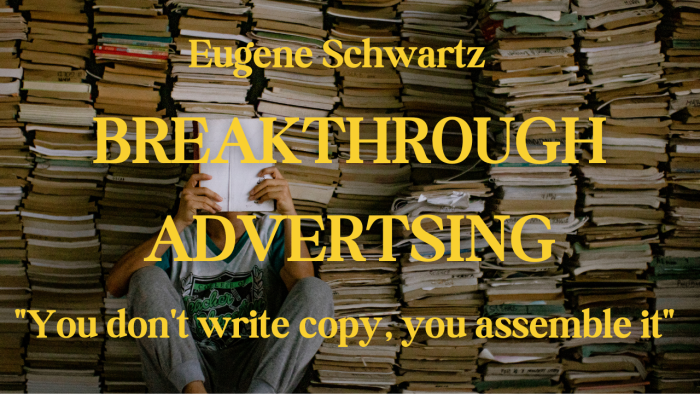
Deciphering how Eugene Schwartz thought was the turning point for us. We began amassing puzzle pieces, page by page, which allowed us to form a comprehensive picture. More importantly, it gave us insight into why “The System” worked and led to numerous “a-ha moments.”
At this juncture, Caroline and I had been at the helm of my digital marketing agency for a decade, specializing in Google SEO, Case Study Marketing, and Press Release Marketing. Our clientele was diverse, encompassing Real Estate, Construction, Insurance, Medical Services, and more. For each client, we employed “The System.”
The Birth of the One Page Case Study Program
Drawing inspiration from Schwartz, and with a deeper understanding of “The System,” We distilled the essence into the One Page Case Study Program. Here are the key components that we unearthed and integrated into the program:
- Desire: This entails conducting motivation research to understand who the potential clients are and their unique profiles. It’s about gauging that for which they yearn.
- Identification Factors: This aspect focuses on pinpointing what potential clients with various profiles relate to and what catalysts can transform them from skeptics to purchasers.
- Belief: This is the culmination of intertwining desire and identification factors to create a potent blend that instills belief and trust in the potential clients.
The One Page Case Study Program is a testament to the transformative power of understanding, adapting, and integrating time-tested principles.
By synthesizing the tenets of “The System” with the invaluable insights from Breakthrough Advertising, it has evolved into an instrumental tool for businesses to captivate, engage, and convert their target audience through well-crafted narratives and targeted communication.
Motivation Research and Identification Factors: Shaping the One Page Case Study

In crafting a One Page Case Study, understanding both the Motivation Research and Identification Factors is pivotal. These two components ensure that the case study speaks directly to the customer’s desires and identifies with them on a personal level.
Let’s delve into how these tactics influenced the creation of One Page Case Studies.
Motivation Research
To engage potential customers effectively, it’s essential to understand what drives them. Here are some critical questions to address:
- What Does a Product or Service Do? This question is about clarifying the primary purpose or function of the product or service. It lays the foundation for how the offering can address a need or desire.
- What Makes a Product or Service Unique? Understanding what sets your offering apart is crucial. This uniqueness is a selling point that attracts customers.
- What Are the Profiles of Your Customers? Knowing who your customers are allows you to tailor the message. Different customer profiles may have varied needs and preferences.
Identification Factors
We found that understanding what potential customers identify with makes or breaks the connection you’re trying to establish. Let’s consider an example:
Example: Tire Store

Most tire store websites display their tires with discounts. However, this approach might not resonate with everyone. Take, for instance, a person who dislikes tire stores due to long waits and the smell of rubber. To them, tires are just tires, and the only differentiating factor might be the price.
A more effective and relatable strategy could be to shift the focus from the tires to the cars themselves.
By highlighting images of various appealing cars, you tap into the diverse profiles of your customers. People identify with their cars and seeing them can evoke a sense of pride and attachment.
This approach helps to build trust and de-emphasizes the commoditization of tires. Moreover, it broadens the market by appealing to different customer profiles through images of various car types.
Motivation Research & The One Page Case Study
By employing Motivation Research and Identification Factors, the One Page Case Study becomes a powerful tool that not only informs but also resonates with the audience.
It aligns the product or service with the consumer’s desires and identity, building trust and facilitating a connection. In the context of Eugene Schwartz’s Breakthrough Advertising, this is akin to crafting a narrative that creates belief in the minds of consumers – a fundamental principle for advertising effectiveness.
The One Page Case Study, enriched with these tactics, becomes a precise, compelling, and relatable narrative that speaks to the very core of the potential customer.
Picture Words: The Heart of Memorable Communication
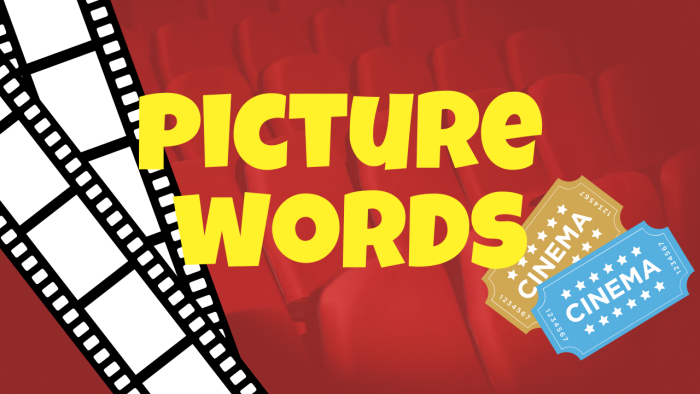
Another intriguing aspect that comes into play in creating effective One Page Case Studies is the use of Picture Words or Image Words. This concept is beautifully elaborated in Gene Schwartz’s “The Brilliance Breakthrough,” a perfect companion to his “Breakthrough Advertising.”
The tagline captures the essence of this book where it reads, “How To Talk and Write So That People Will Never Forget You.”
What are Picture Words?
Picture Words, or Image Words, are words that evoke images in the minds of the audience. Instead of mere text, these words paint a picture, making the content more vivid and relatable.
People tend to remember images much more easily than text. When you say “sunset,” for instance, instead of focusing on the word itself, your mind conjures up the image of the sun setting, with an array of colors scattered across the sky.
Why are Picture Words Important?
Picture Words are crucial for a few reasons:
- Memory: People are more likely to remember images than plain text. By using Picture Words, you’re embedding your message into the audience’s memory.
- Engagement: Images evoke emotions. Picture Words can make your audience feel something, which is a powerful way to engage them.
- Clarity: Sometimes, words can be ambiguous. But a picture paints a thousand words. Picture Words bring clarity to your message.
One Page Case Studies and Picture Words
One Page Case Studies harness the power of Picture Words effectively. When we craft these success studies properly, they become short stories that are rich with imagery. This makes them far more engaging and memorable.
Let’s consider an example to illustrate this point:
Example: Total Gym Campaign with Christie Brinkley and Chuck Norris
The Total Gym campaign featuring Christie Brinkley and Chuck Norris was a masterclass in using Picture Words.
When you think about this campaign, what comes to mind?
It’s the image of Christie and Chuck working out – their muscles in motion, the intensity in their eyes, and the sleek design of the Total Gym equipment.
The words paint pictures that complement the pictures – words like “sculpt,” “transform,” and “power.” The campaign didn’t just talk about fitness; it showed it, painted it, and made people see what the campaign could achieve.
Final Thought
In conclusion, Picture Words are a powerful tool in marketing and communication. They are particularly effective in One Page Case Studies, where the goal is to leave a lasting impression. By creating vivid imagery through words, you can engage the audience on a deeper level, ensuring that your message is not just heard, but remembered and felt.
Mechanization: Showcasing Process to Build Belief

Another essential tactic that Gene Schwartz explores in “Breakthrough Advertising” is Mechanization. This tactic involves showing the processes or explaining how something works to increase belief among the audience.
Let’s dive into what mechanization entails and how to use it effectively in One Page Case Studies.
What is Mechanization?
Mechanization is the art of unveiling the ‘how’ behind a product or service. It entails showing the audience the mechanisms, processes, or systems that make a product or service effective.
By understanding how something works, the audience develops a deeper sense of trust and belief in the product or service.
Why is Mechanization Important?
- Builds Trust: When people understand the process behind a product or service, it demystifies it and makes it more believable.
- Establishes Credibility: Showcasing the inner workings indicates transparency, which is crucial in establishing credibility.
- Empowers Decision Making: Knowing how something works provides the information needed for individuals to make informed decisions.
Integrating Mechanization into One Page Case Studies
One Page Case Studies offer the perfect platform for implementing mechanization. Here’s how:
- Explain the Process: Start by outlining the steps or processes that your product or service entails. This doesn’t have to be overly technical, but it should give enough detail to show that there’s a sound process behind what you’re offering.
- Use Belief Factors: As Schwartz suggests, interweave belief factors throughout the case study. This might include testimonials, data, or other forms of validation that support the effectiveness of the process you’re showcasing.
- Show Results: Conclude by showing the results that the processes have achieved. This could be in the form of before-and-after images, performance data, or customer feedback.
Example: If the One Page Case Study is about a weight loss program, start by explaining the nutritional and exercise regime to follow. Then, integrate belief factors such as testimonials from individuals who have successfully lost weight using the program. Finally, display before-and-after photos or health data to demonstrate the results.
Mechanization Summary
Mechanization is a powerful tactic that can enhance the effectiveness of One Page Case Studies. By showing the audience how a product or service works and backing it up with belief factors, you can build trust, establish credibility, and empower them to make informed decisions.
This approach aligns perfectly with Gene Schwartz’s principles, paving the way for creating case studies that resonate deeply with the audience.
Unraveling the Foundation: How Eugene Schwartz’s 5 Stages of Consumer Awareness Weave into the One Page Case Study Model
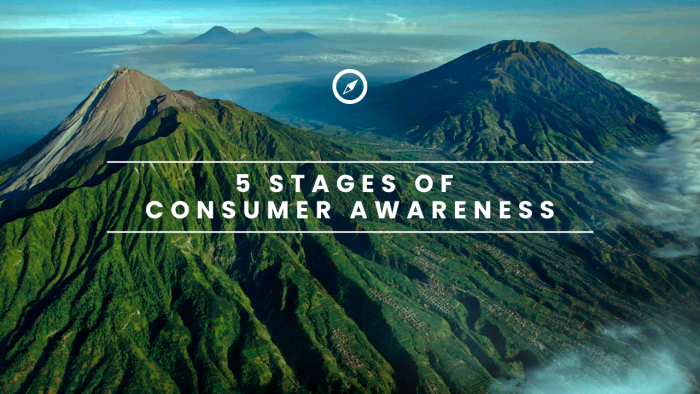
Eugene Schwartz’s five stages of consumer awareness are a cornerstone in advertising, as outlined in his book, Breakthrough Advertising. Interestingly, this concept is not only the heart of Schwartz’s philosophy but also forms the bedrock of the CBRE System, the Bob Knakal System, and the One Page Case Study model.
Let’s take a closer look at how these stages align with these systems to create an effective marketing strategy:
- Unaware Prospects: At this stage, prospects are oblivious to their needs or the existence of products or services that could fulfill them. The CBRE and Bob Knakal Systems initially started by comprehensively studying the market, gaining insights that would be crucial in making these unaware prospects aware of their own needs. Similarly, the One Page Case Study aims to educate this segment by providing them with valuable content that highlights their underlying needs.
- Need But No Desire: Here, prospects recognize a need but haven’t associated it with any product or service. They are skeptical and lack belief in solutions. The CBRE System and Bob Knakal System used market insights and research reports to inform these prospects about various available options. The One Page Case Study, on the other hand, offer success stories that bridge the gap between need and desire, by showing the prospects the potential benefits in a relatable format.
- Products and Services, Which One? At this stage, prospects are aware of various solutions but are unsure which one to choose. Here, the CBRE and Bob Knakal Systems would present prospects with a wealth of options and information, helping them to make an informed decision. One Page Case Studies goes a step further by presenting relatable success stories, making it easier for the prospects to associate themselves with a particular product or service.
- Is This Right for Me? This is where a potential buyer knows about a solution but is unsure whether it’s the right fit for them. This is where the proof element comes in; both the CBRE and Bob Knakal Systems and the One Page Case Study provides success stories and testimonials that allow the prospect to see how others have benefited, helping them gauge if it’s the right choice for them.
- Most Aware Consumer: Finally, the prospect knows what they need, understands the benefits, and is ready to make a purchase. The question now is, “How much does it cost?” At this stage, the One Page Case Study model, along with the other systems, focuses on providing transparent pricing and facilitating the purchase process.
In conclusion, Eugene Schwartz’s 5 stages of consumer awareness are a fundamental principle that has been effectively employed by the CBRE System, the Bob Knakal System, and One Page Case Studies.
By understanding where the consumer is in their journey and providing them with relevant content and proof, these systems have successfully navigated the delicate path from unawareness to purchase.
Amplifying Credibility: Utilizing Quotes in One Page Case Studies

Eugene Schwartz sheds light on an influential tactic: using quotes to augment the credibility of a message. Caroline and I embraced this wisdom by incorporating quotes from renowned figures into One Page Case Studies.
This inclusion not only heightens the impact of the content but also lends an air of authority. Here’s how some exemplary quotes align with and reinforce the One Page Case Study Business Model:
- Zig Ziglar: “If people like you, they will talk to you. If people trust you, they will do business with you.”
This quote underscores the significance of trust in business. One Page Case Studies endeavor to build this trust by presenting success stories and evidence that prospects can relate to, leading to a trusting business relationship.
- Andrew Carnegie: “Riches are subject to your plan.”
Andrew Carnegie emphasizes the importance of planning. We structure and strategically plan the One Page Case Study to ensure that we convey the message effectively to the target audience, thereby maximizing the potential for success.
- Steve Forbes: “Your Brand is the single most important investment you can make in your business.”
Branding is central to One Page Case Studies. Through well-crafted content, they help to shape and fortify the brand image. By effectively communicating the values and benefits of a product or service, they contribute to creating a powerful brand.
- Bob Knakal: “It’s not hard to know what to do to be successful, the hard part is doing it.”
This quote from Bob Knakal captures the essence of taking action. One Page Case Studies are actionable pieces that encourage both businesses and consumers to take the steps necessary for success. They present the ‘what’ and the ‘how’ in a concise format, making the path to success clear.
- Alex Hormozi: “The key to your first $100,000 is to stick with one thing for 12 months and don’t quit. The key to your first $1 Million is to do more of what got you to $100,000.”
Alex Hormozi’s quote stresses the importance of persistence and scalability. We built One Page Case Studies on this principle. They focus on what works, and through continuous marketing and repetition, they scale these successes for greater results.
In summation, integrating quotes from distinguished personalities serves as a potent tool to amplify the effectiveness of One Page Case Studies. These quotations lend authenticity and fortify the message, thereby greatly increasing the persuasiveness and impact of the content.
By interweaving the wisdom of luminaries with solid data and success stories, One Page Case Studies stand as a testament to this enduring insight provided by Eugene Schwartz.
Eugene Schwartz’s Insights Breeding Innovation: The Creation of ‘The Doubter’ Character in One Page Case Studies
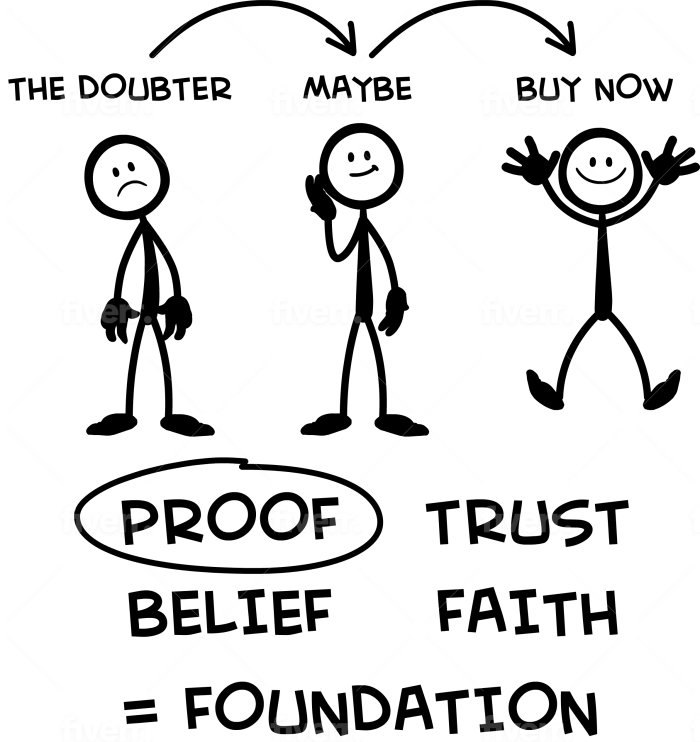
The teachings and methodologies in Eugene Schwartz’s Breakthrough Advertising have a remarkable capacity to lend depth and dimension to other pieces of content. This becomes particularly apparent in the evolution of the One Page Case Study, especially in The CBRE System and the Bob Knakal System.
A vital element that emerged from these teachings is the concept of ‘The Doubter.’ This characterization is a testament to the versatility of Schwartz’s tactics. Rather than labeling a person simply as a buyer, consumer, or prospect, which someone could perceive as passive terms, ‘The Doubter’ introduces an active and vibrant dimension.
‘The Doubter’ is not just a term; it represents a character with skepticism and reservations. This portrayal instigates a proactive approach called proof stacking, which is fundamentally geared towards accumulating and presenting evidence that effectively addresses and neutralizes the doubts of ‘The Doubter.’
What’s intriguing is how this concept germinated. Steven Pressfield, in his book Nobody Wants to Read Your SH*T, stated,
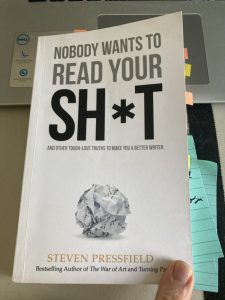 “There is an evil force that is constantly defeating us and bringing to naught all our dreams, let’s name that force, accept it as our enemy, and figure out how to overcome it.”
“There is an evil force that is constantly defeating us and bringing to naught all our dreams, let’s name that force, accept it as our enemy, and figure out how to overcome it.”
On its own, this is compelling, but it does not have the same resonance without the framework provided by Eugene Schwartz. Through the lens of Schwartz’s insights, the quote takes on new life and helps in conceptualizing ‘The Doubter’ as a character to address and win over.
In the One Page Case Study Business Model, ‘The Doubter’ becomes a central figure, and the business owner aspires to evolve from an ‘Expert’ to ‘The Trusted Expert’. This evolution is not just a change in status but represents a journey akin to a hero’s quest.
The narrative is reminiscent of the boxing movie, Rocky played by Sylvester Stallone, where the characters are vivid, and their struggles and triumphs are palpable. In this scenario, ‘The Doubter’ is analogous to Apollo Creed, serving as both a challenge and an impetus for growth.
This creative approach to character development, particularly in the case of ‘The Doubter’, amplifies the effectiveness of the One Page Case Study. It adds depth, relatability, and an engaging narrative that goes beyond mere data. We could not achieve this depth and engagement without the foundational knowledge and methodologies Eugene Schwartz provides in Breakthrough Advertising.
His work continues to serve as a catalyst for innovation and the creation of engaging and powerful content.
- Character Introduction: ‘The Doubter’ emerges from Eugene Schwartz’s teachings as an active character with skepticism, enhancing the One Page Case Study by giving depth to consumer portrayal.
- Proof Stacking Strategy: Addressing ‘The Doubter’ involves a proactive approach called proof stacking, focused on amassing, and repeatedly showcasing evidence to effectively mitigate skepticism and reservations.
- Narrative Enrichment: Integrating ‘The Doubter’ character adds a relatable narrative dimension to One Page Case Studies, akin to a hero’s journey, making the content more engaging and resonant. This innovation is deeply rooted in the insights provided by Eugene Schwartz in “Breakthrough Advertising”.
One Page Case Studies Mastery
I would also like to thank Dino Gomez the Founder of 7 Figure Visionary and the Mini Workshop formula for getting new clients. Dino is our coach who was instrumental in bringing the One Page Case Study program to the market.
Thank You Dino.
7 Figure Visionary is a business accelerator program for coaches & consultants ready to grow to 6 figures & beyond.
The program follows a system for growth used by the founder, Dino Gomez, which has helped him to generate multiple
millions online.
Inside 7 Figure Visionary clients learn message positioning, offer creation, & how to convert clients following a mini workshop formula.
Ready to transform your marketing approach? Embark on a journey with our One Page Case Study Program, Training & Mastermind. Gain access to innovative strategies, expert-guided training, and a community of professionals in our exclusive Facebook group.
Don’t let this opportunity to elevate your business pass you by. Take the first step towards breakthrough advertising success today! Click here to become a member….
